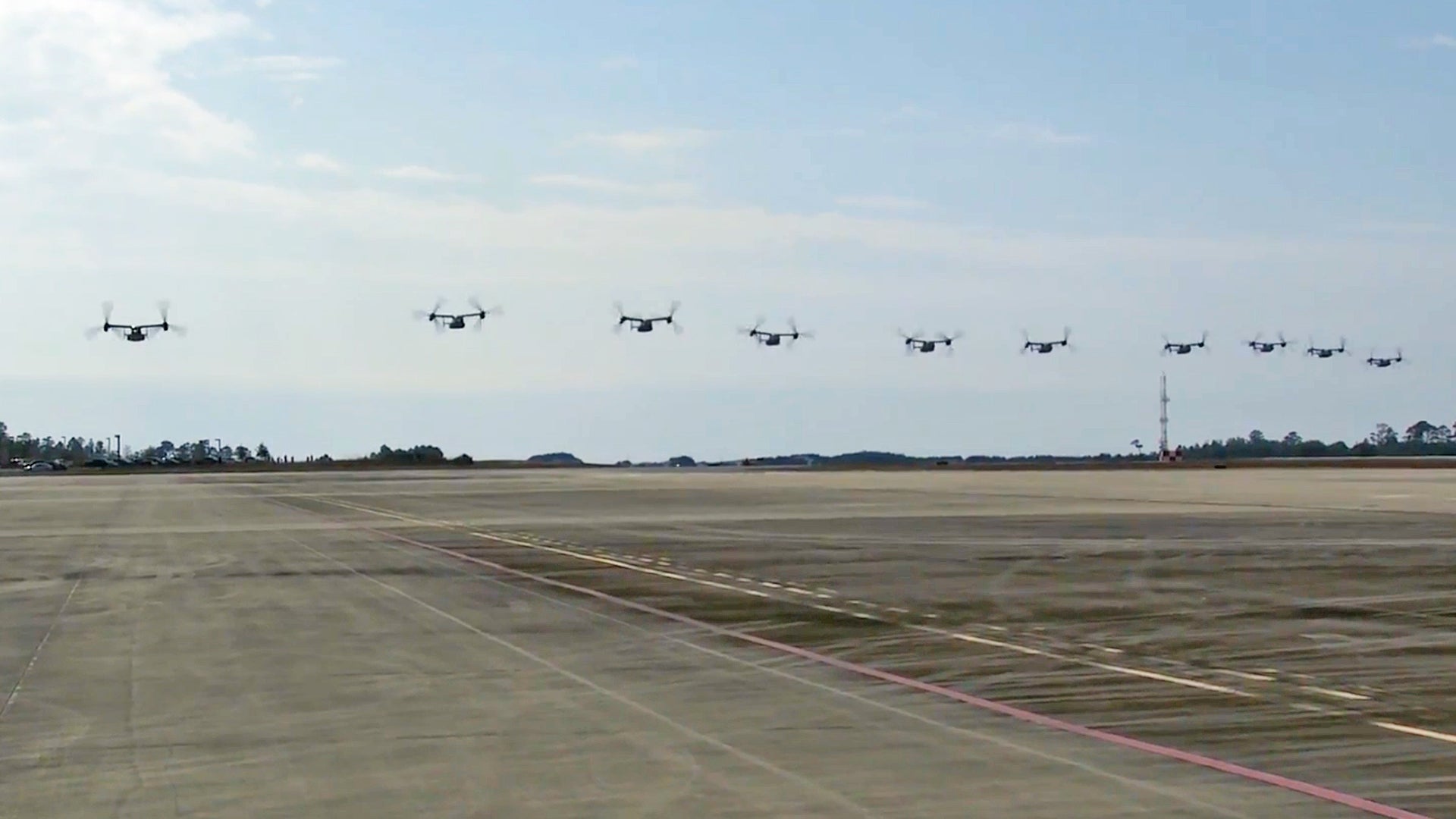The V-22 is quite thunderous while in hover, but when its rotors are tilted forward and it’s in plane mode it is pretty damn quiet, and can give off a “hissing” sound as it flies by. Now take that sound, multiply it by ten, lower the aircraft’s altitude to just 150 feet above the ground, and you have the awesome formation flyby seen in the video below.
Four CV-22s from the 20th Special Operations Squadron based at Cannon AFB in New Mexico and six from the 8th Special Operations Squadron based at Hurlburt Field in Florida combined forces to perform an unprecedented ten ship flyover of Hurlburt Field on Friday. The flyover capped a large training exercise between the two squadrons.

The CV-22B has increasingly become the go-to asset of choice for special operations around the globe. There are only roughly 45 of these aircraft in the USAF’s inventory, which makes having over 20 percent of the fleet flying together at one time and in one place all that more unique of an undertaking, especially considering the type’s intense tasking overseas. While the Marines have nearly 250 MV-22 Ospreys in service, even seeing ten of those in formation at low altitude and in airplane mode is rare.
The CV-22 was originally procured by AFSOC to replace the fabled MH-53 Pave Low fleet of special operations helicopters. Like the last Pave Low variants (MH-53M Pave Low IV), the CV-22 version of the Osprey has an advanced navigational suite—including terrain following radar for low-level penetration of enemy airspace in any weather conditions. It also features a highly capable communications package, one of the most extensive self-defense and electronic warfare suites fielded on a tactical aircraft (ALQ-211, AAQ-24 Nemesis, etc), as well as a long list of other upgrades including extended range fuel tanks.

CV-22 crews specialize in special operations support missions but they can also be used for Combat Search And Rescue/Tactical Recovery of Aircraft and Personnel as the aircraft high-speed and penetration capabilities lends itself to such a time critical and dangerous mission set. This has led to some, including the author of this post, to ask why the USAF is purchasing dozens more HH-60 Pave Hawks to fulfill a critical mission set that is ideally suited for tilt-rotor technology. And considering the USAF has already paid dearly to develop the CV-22, why continue to buy a platform that remains less than ideal for its intended, and extremely challenging mission?
The V-22 Osprey has found itself expanding its mission portfolio over the last decade. The aircraft flies White House staff around, fights fires, and is being armed with new weapons, and that’s on top of its work with the USMC as a general purpose medium-lift helicopter, often standing in as special operations platform in the Middle East and Africa. It is even going to try to replace the C-2 Greyhound in the carrier onboard delivery role, for better or worse. And while it is debatable that for many of the more mundane tasks it performs on a daily basis lower-cost and far simpler helicopters could be used, for some missions the aircraft cannot be beaten, and AFSOC, with its maturing fleet of CV-22s, has that pretty well figured out.
Contact the author: Tyler@thedrive.com
